In the increasingly diverse world of domesticated cats, the age of various breeds spans a wide range, from ancient lineages to more recent developments. Among the oldest cat breeds, the Egyptian Mau and the Abyssinian trace their roots back to ancient Egypt, while the Thai and Siamese breeds date back to the Kingdom of Siam (now Thailand).
Cat breeds continue to emerge, some through natural mutations and others through purposeful crossbreeding. More recently, breeds such as the Bengal, Snowshoe, and the Sphynx have emerged within the past century. Listed are the breeding timelines of some of the more recent modern cat breeds that emerged in the 20th century.
Modern cat breeding
Modern cat breeding, as we know it today, began in the late 19th century. The first cat show was held at the Crystal Palace in London in 1871, which marked the beginning of organized cat breeding and the establishment of breed standards.
This event led to a growing interest in selective breeding to enhance specific traits and create distinct cat breeds. As a result, various cat breeds were developed and refined during this period, and cat fancier clubs and organizations began to form to promote and oversee these efforts.
Timeline of modern cat breeds
Below is a general timeline of modern cat breeds that evolved or were selectively breed the 20th century. Since different cat registries don’t all accept the same breeds, this timeline includes modern cat breeds from the 45 cat breeds formally accepted by the Cat Fanciers Association.
Please note, with breeds that were initially developed in the 19th century, some of the dates are not exact as there are conflicting stories and records. Most of the dates listed in the timeline have been collected from the breed’s entries on The Cat Fancier’s Association (CFA) and The International Cat Association (TICA).

Abyssinian
The Abyssinian cat breed, as we know it today, was developed sometime in the late 19th century in Great Britain.
CFA notes that the earliest reference to the Abyssinian cat was in the January 27, 1872 issue of Harper’s Weekly which noted about the cat at the 1871 Crystal Palace cat show, “The third prize was taken by the Abyssinian cat, shown in the lower right-hand corer of the illustration. She was captured in the late Abyssinian War, and was most remarkable for her woe-begone appearance, seemingly discontented at her sudden elevation into notoriety, and longing for her barbaric freedom in the good old days of King Theodore.”

While there are stories about the breed originating from a cat named Zula, who was brought from Abyssinia (modern-day Ethiopia) to England by a British soldier in the 1860s, there is no corroborating evidence of this. Genetic testing has indicated that the ancestral origins of the Abyssinian cat are from the Bengal Bay region of India.
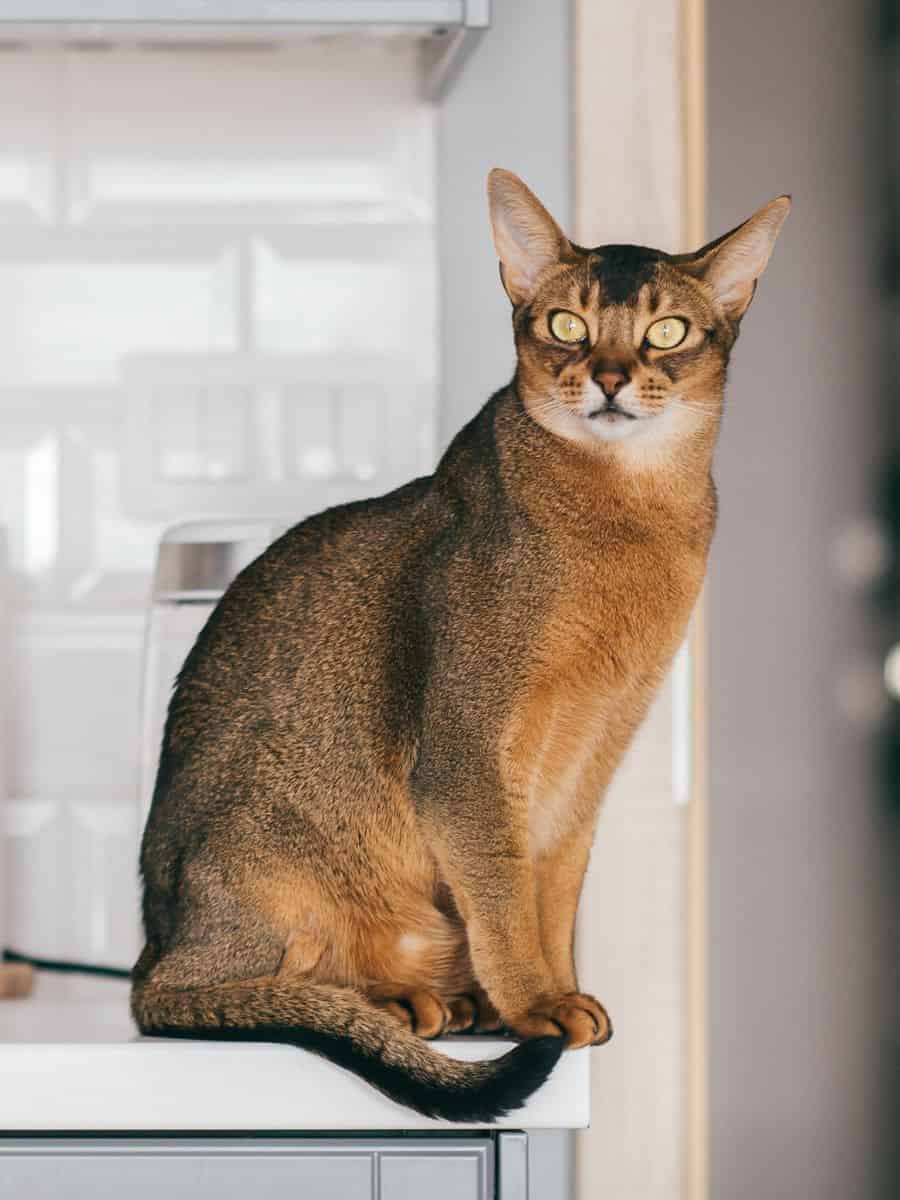
Abyssinians, also known as Abys, became more established in the early 20th century, especially in the United States and is now one of the most popular cat breeds in that country.
American bobtail
The American Bobtail first emerged in the 1960s. This breed is known for its naturally occurring short tail, which resembles the bobbed tail of a wild cat.
The lore about the origin of the American Bobtail can be traced back to a male tabby cat named Yodie, who was found in Arizona by a couple in the early 1960s. Yodie, with his bobbed tail and wild appearance, was bred with the couple’s female Siamese cat, and many of the resulting offspring exhibited the same bobtail characteristics.
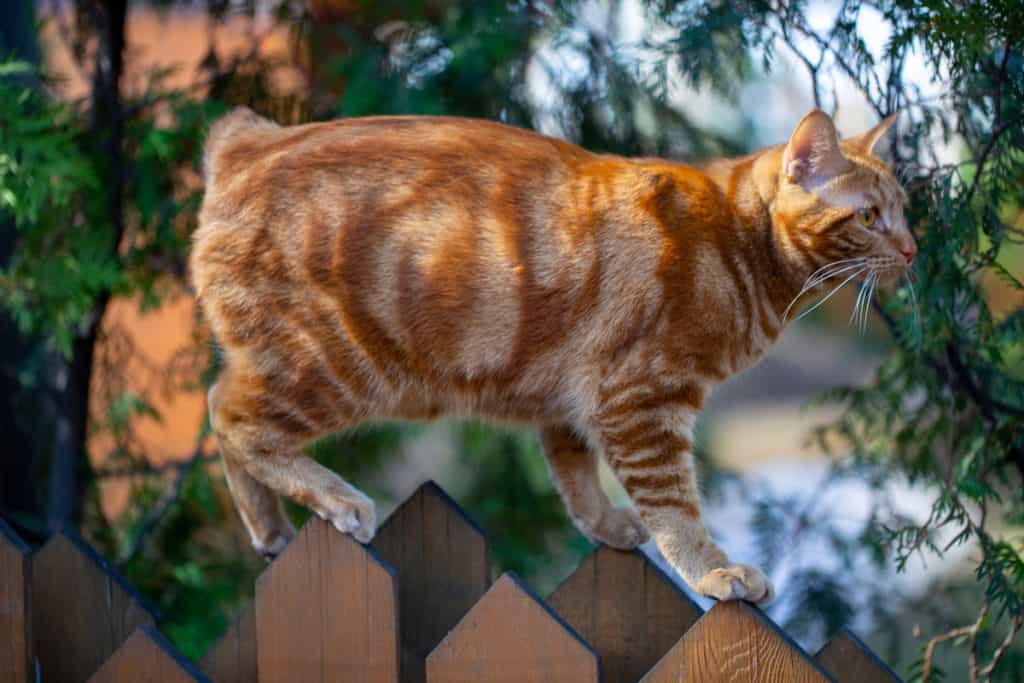
Over time, breeders continued to selectively develop the breed, focusing on its health, temperament, and distinctive appearance, eventually gaining recognition from cat breed organizations.
American curl
The American Curl is a unique and charming cat breed, known for its distinctive curled-back ears.
The breed’s story began in 1981 in Lakewood, California, when a stray kitten with unusual ears was found by Joe and Grace Ruga. This kitten, named Shulamith, possessed the genetic mutation responsible for the curled ears, which she passed on to her offspring.

Cat breeders began to selectively breed cats with the curled ear feature, giving rise to the American Curl breed.
American wirehair
The American Wirehair, as the name suggests, is a cat with a unique wiry coat and whiskers. This breed’s origin can be traced back to a spontaneous genetic mutation that occurred in a red and white male cat from a litter of kittens born in Verona, New York, in 1966.
This kitten had an unusual coat which caught the attention of a local cat breeder, Joan O’Shea, who recognized the potential for a new breed. By selectively breeding the cat, named Adam, with a female domestic shorthair, O’Shea was able to reproduce the wiry coat in their offspring.

Over the years, dedicated breeders worked to refine the American Wirehair’s characteristics, leading to its recognition by cat breed organizations.
Balinese cat
The Balinese cat is a longhaired variety of the Siamese breed. The Balinese first emerged in the early-20th century as longhaired Siamese kittens. The longhaired Siamese cat was registered with the American Cat Fanciers’ Federation in 1928.
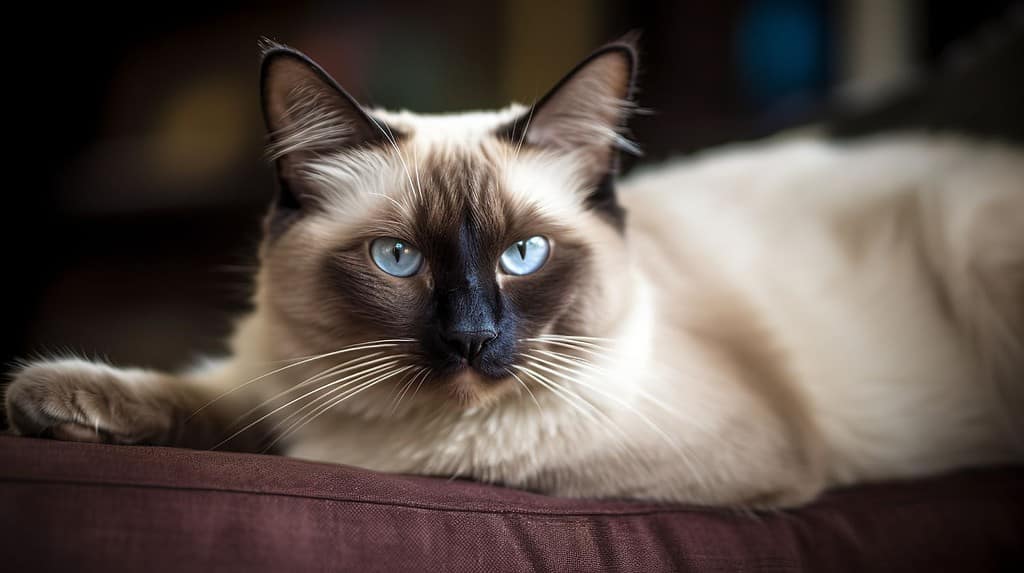
In the 1950s breeders began to selectively develop these longhaired Siamese cats as a separate breed. The cats are called “Balinese” due to their resemblance to the graceful dancers of Bali, Indonesia. Balinese cats retain the same physical characteristics of a sleek body and blue almond-shaped eyes as their Siamese counterparts. Balinese cats also are categorized by whether their features are Old-style with a rounder head and body or modern with a more narrow face and sleeker body.
Bengal cat
In 1963, the first documented cross breeding of an Asian leopard cat (Prionailurus bengalensis) with a male black mixed breed domestic by California breeder Jean Mill produced what would become the Bengal cat. The Bengal cat, known for their striking, wild-like appearance reminiscent of a leopard, is the only cat with rosettes as a breed standard.

The initial development of the Bengal breed began in the 1960s and 1970s, but it was in the 1980s that breeder Jean Mill effectively pioneered the breed in the United States. Mill’s objective was to create a domestic cat with the physical characteristics of a wild cat but the temperate demeanor of a household pet.
Bombay cat
The Bombay cat, known for its sleek, panther-like appearance, was developed starting in 1953 by a breeder named Nikki Horner in Louisville, Kentucky, USA. Her goal was to create a breed that resembled a miniature black panther with a domestic cat’s temperament. To achieve this, Horner initially crossbred sable Burmese cats with black American Shorthairs. This combination resulted in cats with the desired muscular, medium-sized body, and a glossy, jet-black coat. The Bombay cat received championship status in 1976 by the CFA.
The breed was named “Bombay” as a nod to the black leopards found in the Indian city of the same name. The Bombay is known for its striking copper or golden eyes.
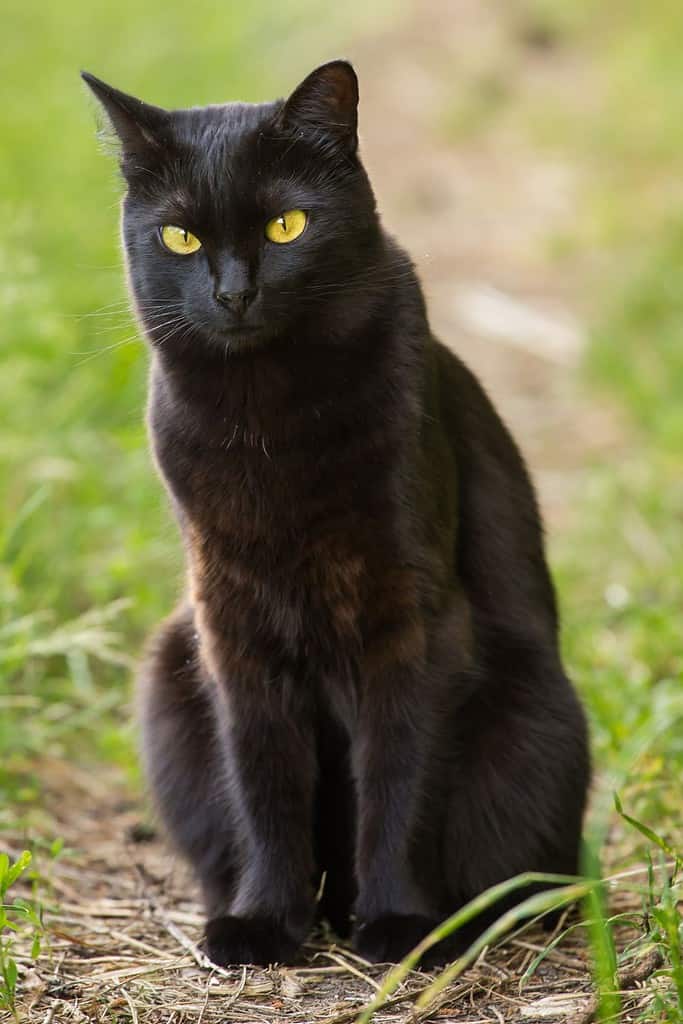
Burmese
In 1930, a small, dark-brown cat named Wong Mau was brought from Burma (now Myanmar) to the United States by Dr. Joseph Cheesman Thompson. Wong Mau was unique in appearance, distinct from Siamese cats of the time, with a compact, muscular body and a rich, sable-colored coat. Recognizing her uniqueness, Thompson, a naval doctor and a cat fancier, embarked on a breeding program with the intention of establishing a new breed.
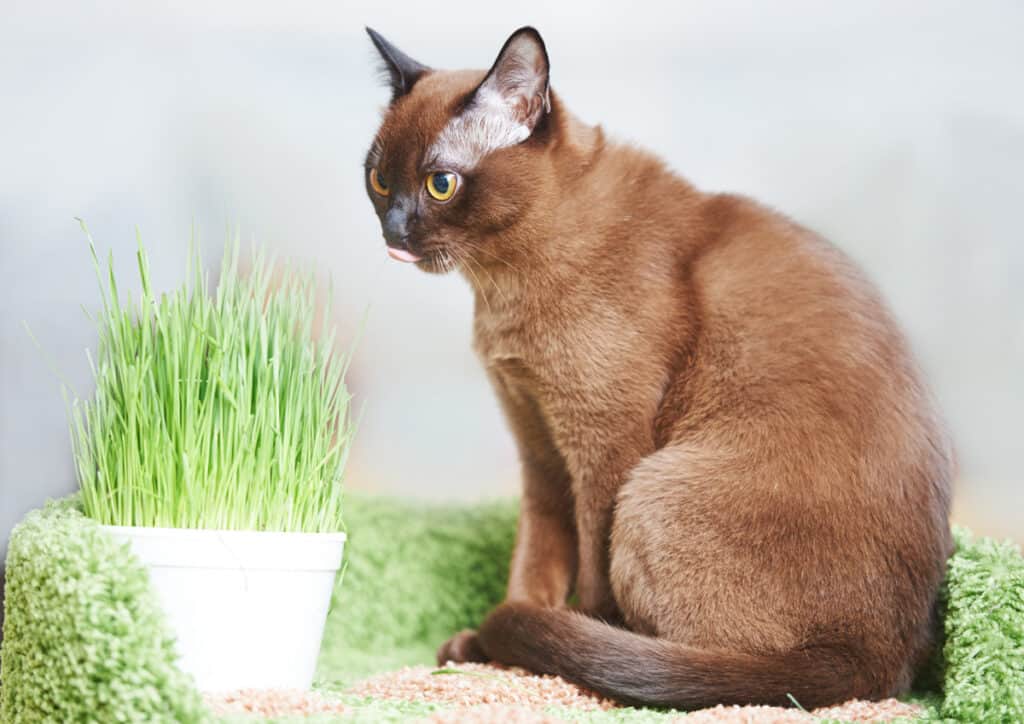
Thompson initially bred Wong Mau with Siamese cats, producing kittens with various coat colors. Through selective breeding, focusing on those with darker, uniform coats, Thompson and other breeders gradually developed the distinct characteristics of the Burmese breed. The breed was characterized by its solid, muscular body, short, glossy coat, and affectionate, social temperament. The Cat Fanciers’ Association (CFA) recognized the Burmese in 1936, though it was temporarily withdrawn and reestablished in 1953 after outcrossing efforts to increase the genetic pool.
Chartreux
The Chartreux, is a blue cat breed known for its striking blue-gray coat and copper or gold eyes, has a storied history that traces back several centuries in France. The exact origins of the Chartreux are somewhat mysterious and steeped in legend, with one popular theory suggesting that they were brought to France by Carthusian monks from the Middle East during the Crusades. Pedigree breeding of the Chartreuse began in the 1920s according to the Cat Fancier’s Association.
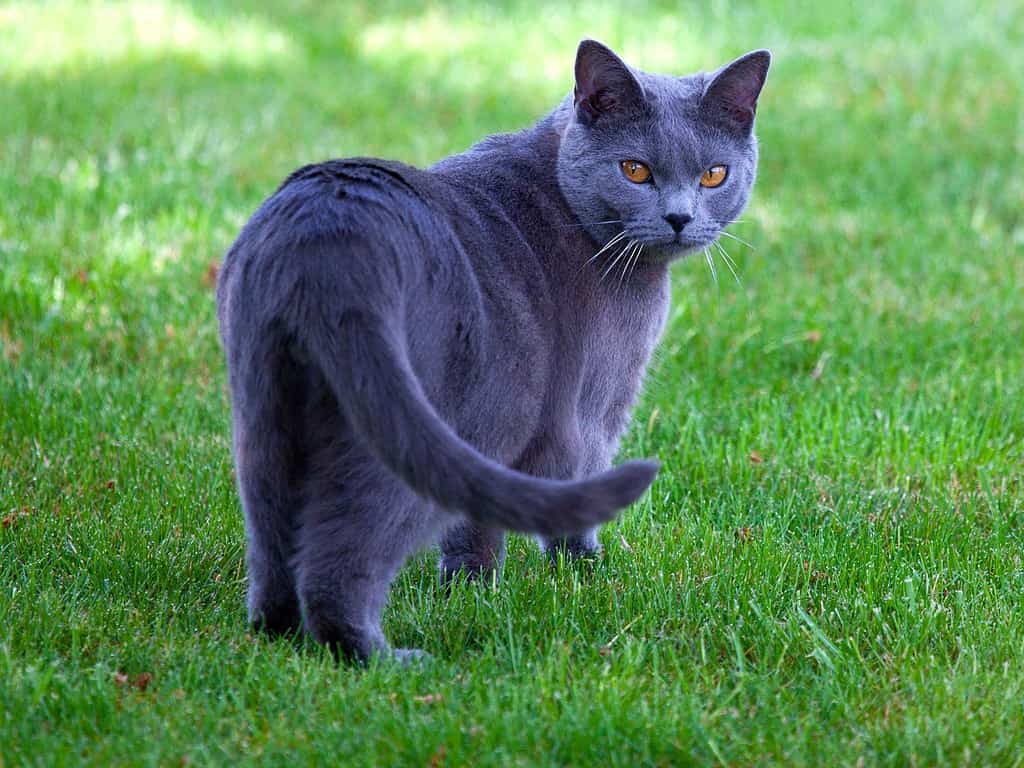
Lykoi cat
The Lykoi cat, often referred to as the “werewolf cat” due to its unique appearance, has a relatively recent and intriguing origin. This breed emerged through a natural genetic mutation in domestic shorthair cats. The first known Lykois were identified in 2010 when two unrelated litters of kittens were born with a distinct appearance in two different rescue cat populations in Virginia and Tennessee, USA. These kittens exhibited a sparse coat, with hair missing around the eyes, nose, ears, and muzzle, giving them a werewolf-like look.
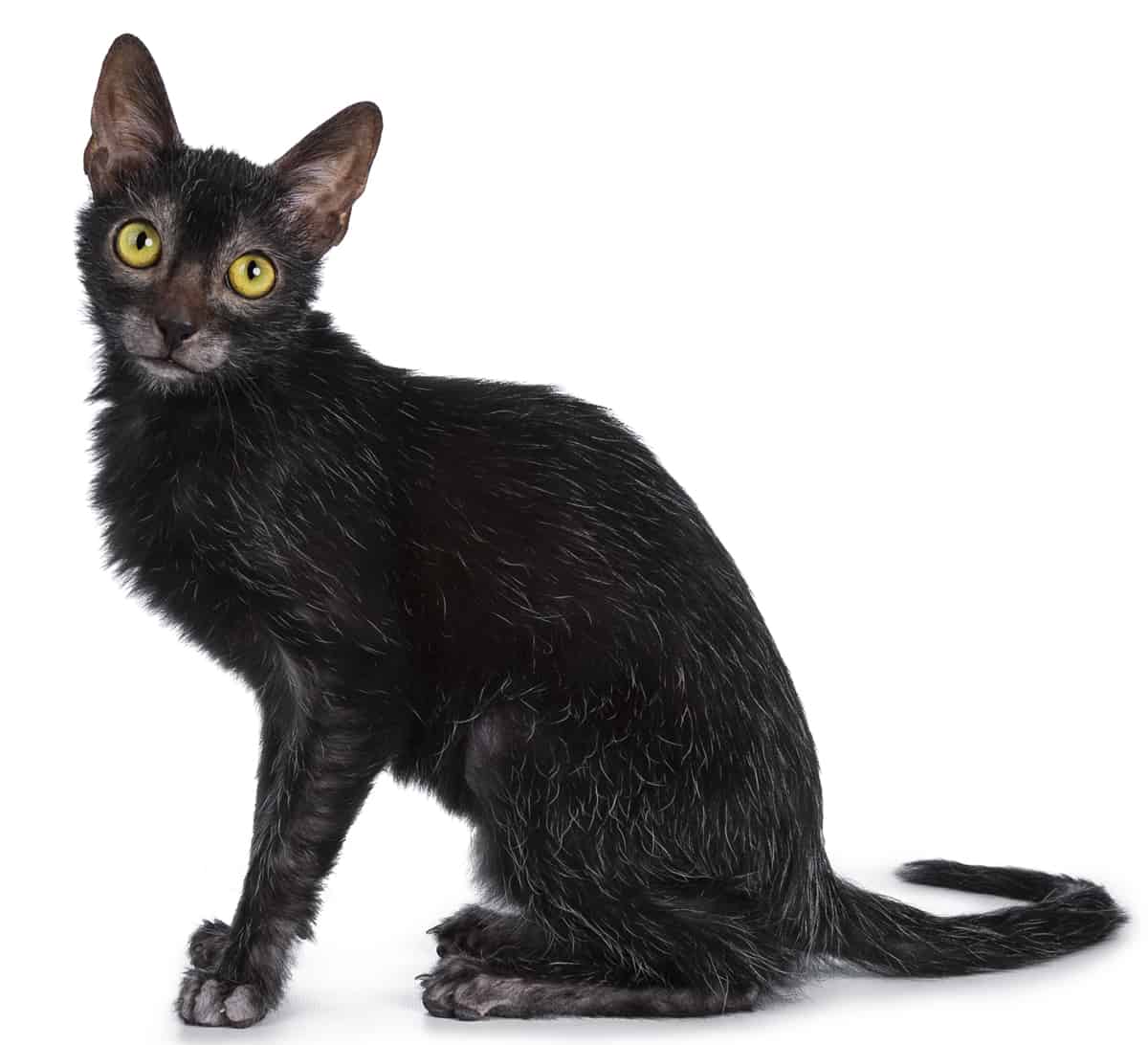
Veterinarian Dr. Johnny Gobble and his wife, Brittney Gobble, who were among the first to identify these unique cats, took an interest in understanding the genetics behind their appearance. The Gobbles used these naturally occurring Lykois and bred them with black domestic shorthairs to establish a healthy gene pool and refine the breed’s characteristics.
The mutation responsible for the Lykoi’s coat is recessive, meaning that both parents must carry the gene for their offspring to express the trait. Unlike some hairless cat breeds, the Lykoi is not completely hairless but has a unique coat that is partially missing, giving them a roan-like appearance. This breed’s development was carefully monitored, with an emphasis on health and genetic diversity. The Lykoi was officially recognized as a new breed by The International Cat Association (TICA) in 2011.
Ocicat
Originating in the 1960s in the United States, the Ocicat was created by crossing Siamese, Abyssinian, and American Shorthair breeds. The Ocicat, a breed known for its striking spotted coat resembling a wild cat, was developed unexpectedly in the United States in 1964. Breeder Virginia Daly, in an attempt to create an Abyssinian-pointed Siamese cat, crossed a Siamese and an Abyssinian.
The resulting kittens appeared Abyssinian, but a subsequent breeding between one of these kittens and a Siamese led to a litter that included a kitten with a unique ivory coat marked with golden spots. Named Tonga, this kitten was the first Ocicat, though he was initially just a happy accident in the breeding program. Daly’s daughter suggested the name “Ocicat” because of the breed’s resemblance to the ocelot.

Recognizing the potential for a new breed, further breeding programs were undertaken, introducing American Shorthair into the mix to enhance the Ocicat’s body size and add silver to its range of coat colors. Despite its wild appearance, the Ocicat does not have any wild cat DNA; it’s an entirely domestic cat breed known for its friendly and sociable nature. The Cat Fanciers’ Association recognized the Ocicat as a breed in 1987,
Oriental
The Oriental cat, known for its sleek body, striking features, and wide range of coat colors and patterns, has its origins in a breeding program that began in the 1950s and 1960s in the United Kingdom. Developing of the Oriental cat breed was formalized in the United States around 1970-1971 and the breed was accepted for championship status in 1977 by the Cat Fancier’s Association.
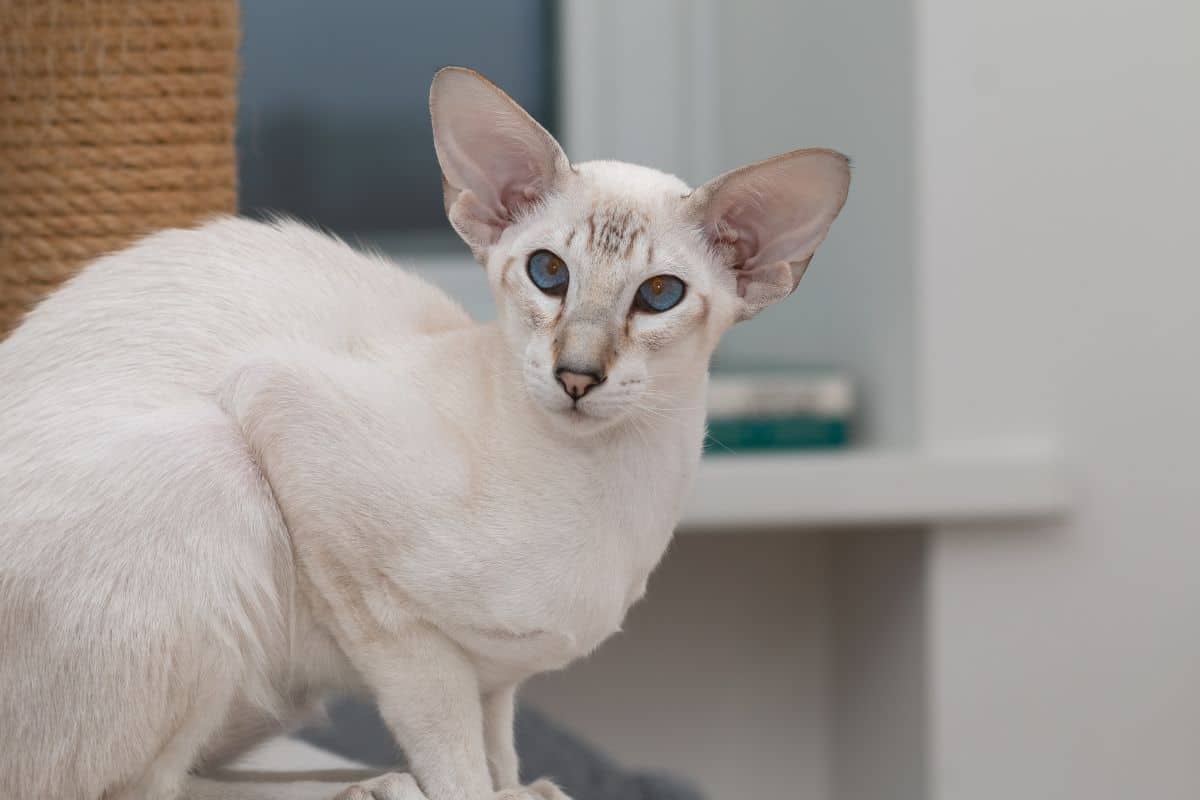
Breeders sought to create a cat that had the physical structure and distinct personality of the Siamese but with a wider variety of coat colors and patterns. To achieve this, Siamese cats were crossbred with other breeds, including the American Shorthair and the Abyssinian. The result was a cat with the elegant, slender body and the active, vocal nature of the Siamese, but with a diverse array of coat colors such as solid, tabby, and bi-color, and eye colors beyond the traditional blue of the Siamese. This breeding effort led to the recognition of the Oriental cat as a distinct breed. According to the CFA, there are over 600 color, pattern, and coat length combinations associated with the Oriental Cat.
RagaMuffin
The RagaMuffin is a medium-long fur cat breed that emerged from the Ragdoll cat breed in 1994 after a group of breeders wanted to develop a breed of cats with more freedom from the strict Ragdoll standards. While Ragdoll cats must have the standard colorpoint coloration, Ragamuffin cats can have a range of colors and patterns such as solid colors, tabby, or tortoiseshell. RagaMuffins were given registration status in 2003 by the CFA.
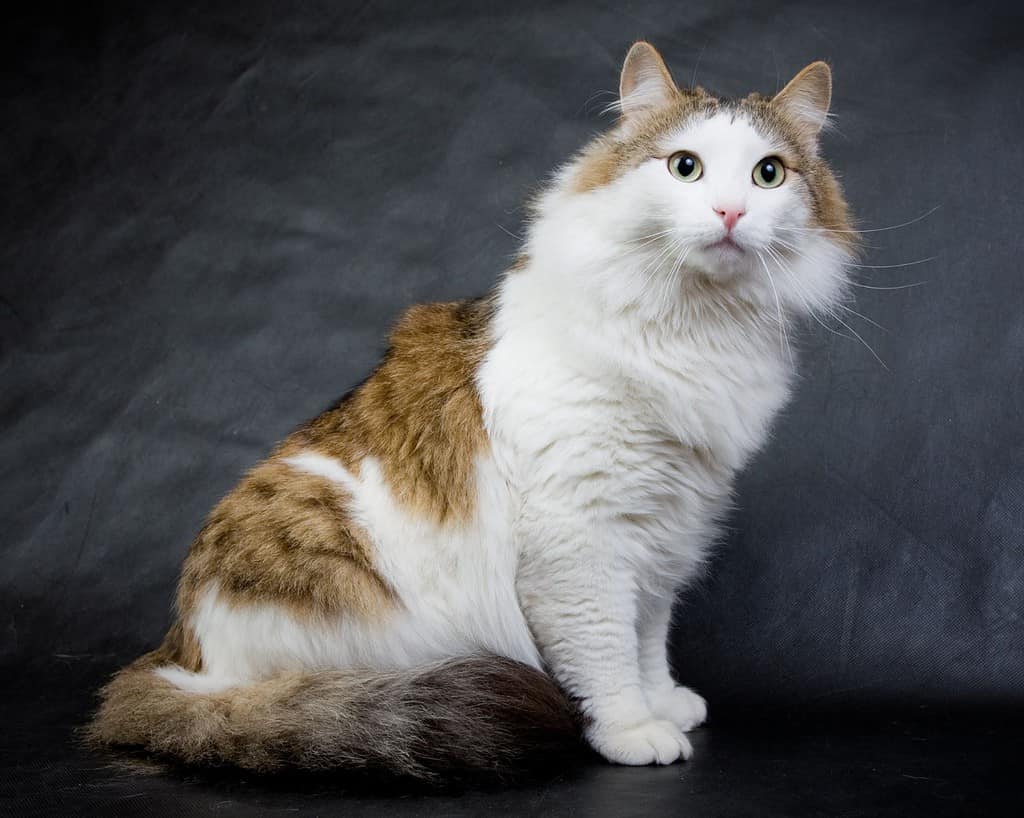
Ragdoll cat
The Ragdoll cat, known for its striking blue eyes and gentle temperament, was developed in the 1960s in California by a breeder named Ann Baker. The breed’s origin story begins with a domestic longhaired white cat named Josephine, who was hit by a car and taken to a local university for treatment. After her recovery, Josephine produced several litters of kittens that were notably affectionate and relaxed, often going limp when held, a trait that would become a hallmark of the Ragdoll breed. Intrigued by these characteristics, Baker acquired some of Josephine’s kittens and began a breeding program. She selectively bred these cats, focusing on traits such as a docile temperament, large size, and beautiful pointed coat patterns.

Baker’s breeding program was quite exclusive, and she even created her own registry, the International Ragdoll Cat Association (IRCA), in 1971. The breed was later recognized by other major cat registries, and Ragdolls quickly gained popularity due to their plush coats, striking blue eyes, and particularly sweet, gentle dispositions.
Selkirk rex
The story of the Selkirk rex cat breed began in 1987 in Montana, when a stray cat gave birth to a kitten with a curly coat. The breeder, Jeri Newman, took in the kitten and named her Miss Priss. Newman quickly recognized the kitten’s unique trait and suspected it could be the result of a genetic mutation.
After further testing, it was confirmed that Miss Priss had a spontaneous mutation that caused her curly coat. Newman realized that this mutation could be used to create a new breed of cat, and she began a breeding program to develop the Selkirk Rex.

To create the new breed, Newman bred Miss Priss with several different breeds, including Persians, British Shorthairs, and Exotics. By breeding Miss Priss to these other cats, Newman was able to establish a breeding population that would eventually become the Selkirk Rex breed.
Scottish fold
The Scottish fold is a distinctive breed known for its unique folded ears, a result of a natural genetic mutation. The story of this breed began in 1961 on a farm in Scotland, where a white cat named Susie was discovered. Susie had unusual folded ears, a trait that sparked the interest of a neighboring farmer and cat enthusiast, William Ross. Ross, recognizing the uniqueness of Susie’s ears, acquired one of her kittens, which also exhibited the same ear fold. He, along with geneticist Pat Turner, began a breeding program to develop the breed, using British Shorthairs and other local farm cats in the breeding process to enhance the gene pool and maintain genetic diversity.
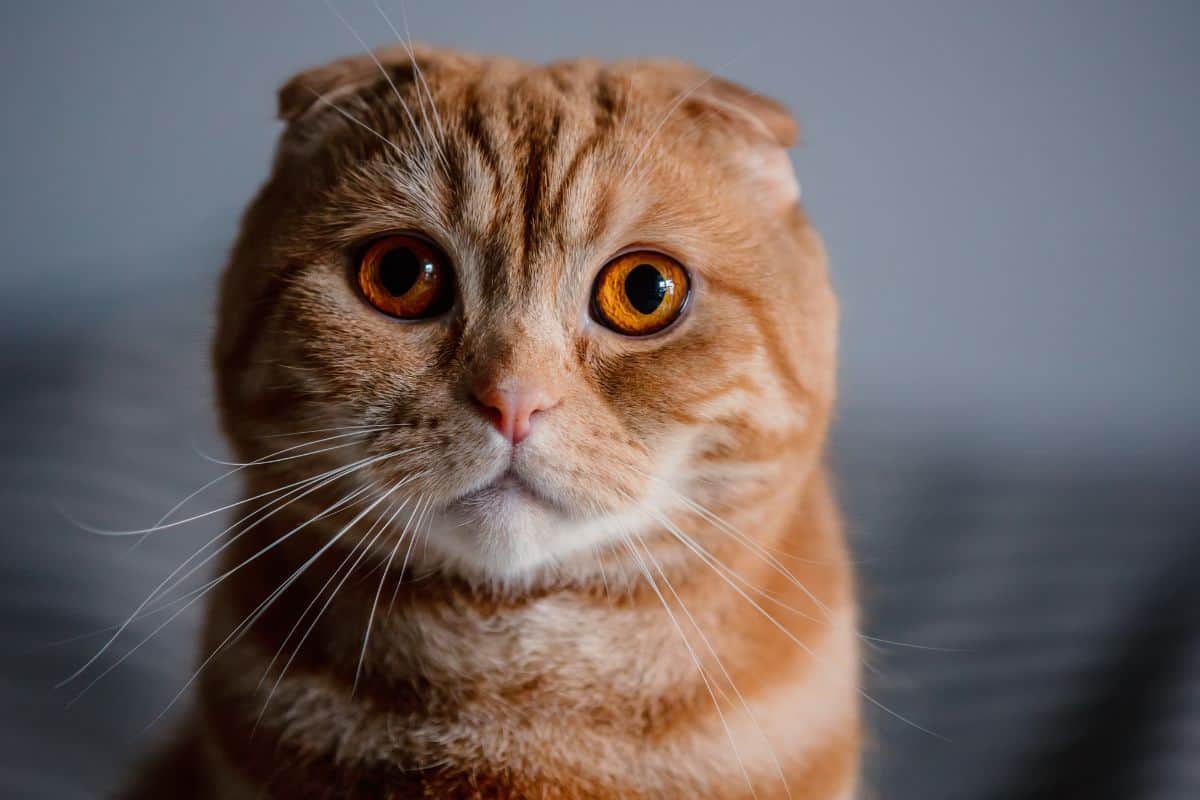
The breed was first registered in the United Kingdom in the early 1960s and gained popularity for its distinctive appearance and gentle, playful temperament. The Scottish Fold’s development was marked by careful breeding to ensure the health and stability of the gene responsible for the folded ears, a feature that only appears if the kitten inherits the gene from at least one parent.
Somali
The Somali cat, with its striking, fox-like appearance and playful personality, is essentially the long-haired variant of the Abyssinian cat. Its development is somewhat accidental and a story of hidden genetics coming to the fore. In the 1940s and 1950s, some Abyssinian kittens were born with a long-haired coat, a trait that was initially considered undesirable for the breed standard. These long-haired kittens were the result of a recessive gene present in the Abyssinian gene pool. Interest in these unique-looking cats began to grow, particularly in the United States and Canada.

Breeders started to selectively breed these long-haired Abyssinians in the 1960s, aiming to establish a breed that retained the Abyssinian’s characteristic ticked coat and lively temperament but with a longer, flowing coat. According to PetMD, the name “Somali” was chosen by cat breeder Evelyn Mague in 1969 due to Somalia’s geographical proximity to Ethiopia, the country formerly known as Abyssinia, thus acknowledging the breed’s Abyssinian roots. Official recognition of the breed by the CFA came in the 1979.
Sphynx
The Sphynx cat, renowned for its distinctive hairless appearance, originated through a natural genetic mutation. The first known naturally hairless cat in the breed’s lineage was born in 1966 in Toronto, Canada, named Prune. This kitten’s unique trait sparked interest and led to a dedicated breeding program to develop a hairless breed. Breeders initially faced challenges due to the genetic complexities of hairlessness.
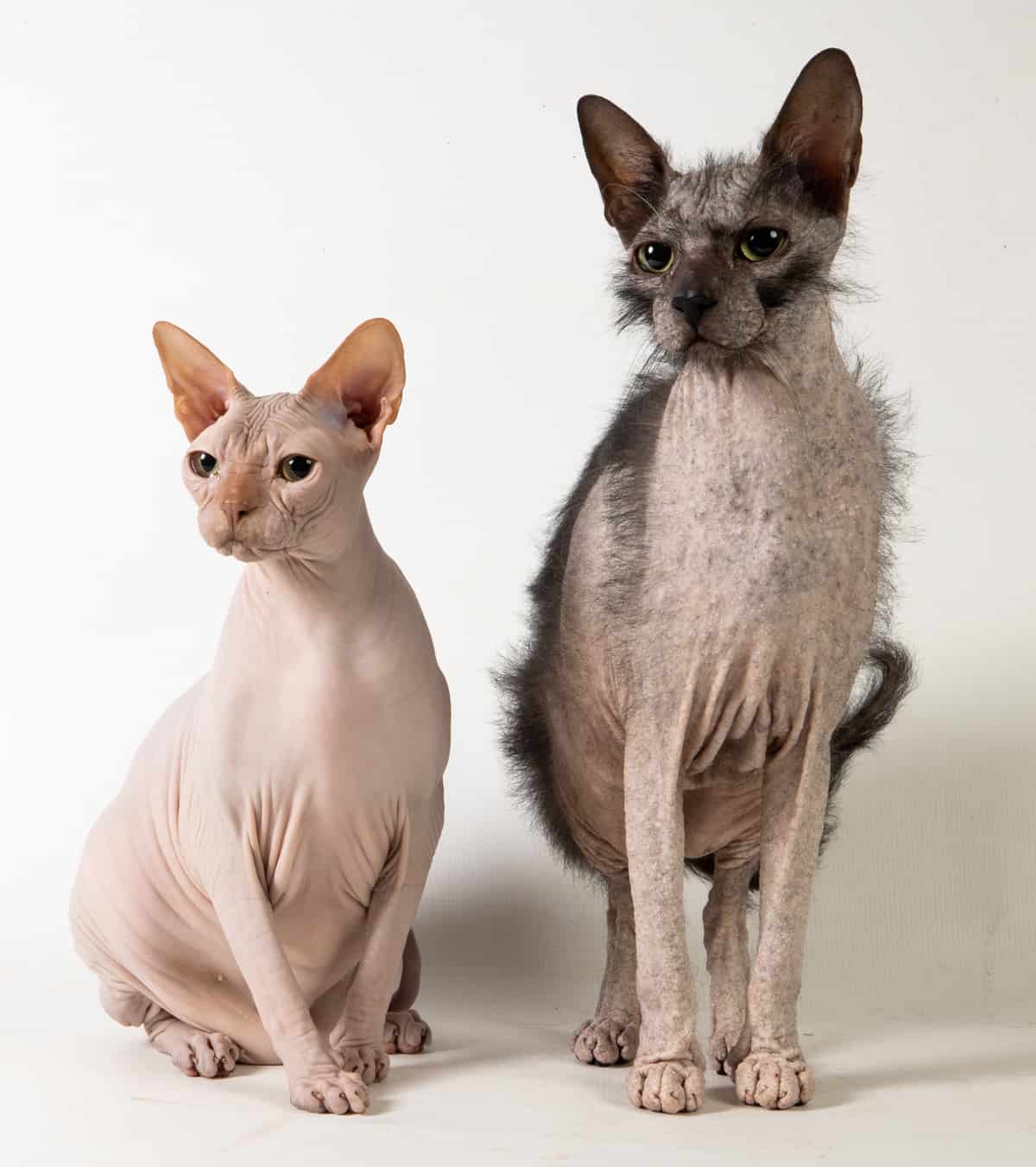
The early development of the Sphynx involved crossing Prune and his descendants with furred breeds, including the Devon Rex, to strengthen the gene pool and establish a healthy, viable breed. The resulting breed, named the Sphynx for its resemblance to the ancient Egyptian sphinx sculptures, was characterized not only by its lack of a fur coat but also by its muscular body, large ears, and expressive, almond-shaped eyes. The breed’s development was guided by a focus on ensuring health and genetic diversity. The Sphynx was officially recognized in the late 1970s.
Toybob
The Toybob cat, a diminutive and relatively new breed, originated from Russia in 1983. The development of the Toybob cat breed began when a cat breeder in Russia noticed a tiny cat with a kinked, short tail – resembling a bobtail. Intrigued by the cat’s compact size and unique tail, the breeder began a program to develop this distinctive feature into a new breed. The cats used in this breeding program were reportedly a mix of stray and domestic cats, and their small size was a key trait breeders sought to retain and stabilize. Toybobs are one of the smallest cat breeds, staying kitten-sized their entire lives.

Despite their small stature, Toybobs are muscular and robust, with a temperament that is playful, affectionate, and adaptable. The breed was recognized in Russia in the early 1990s. The Toybob remains one of the smaller cat breeds, known for its kitten-like appearance throughout its life, and continues to grow in popularity both in Russia and internationally.
Other modern cat breeds not recognized by the Cat Fancier’s Association
New cat breeds continue to be developed. Not all cat breeds are formerly recognized by cat organizations. Here are some other cat breeds and their development timelines:
- Australian Mist (1970s): Developed in Australia, this breed is a mix of the Abyssinian, Burmese, and domestic shorthair cats.
- Savannah (1980s): A hybrid breed between domestic cats and the African serval, noted for its large size and spotted coat.
- Peterbald (1990s): Originated in Russia, known for its distinctive hair-losing gene; it’s similar in appearance to the Sphynx.
- Munchkin (1990s): Known for its short legs, a result of a genetic mutation. The breed was developed in the United States.
- Toyger (1990s): Bred to resemble a miniature tiger, this breed was developed by crossing domestic striped cats to enhance their tiger-like appearance.
- Napoleon (2000s): Now known as the Minuet, this breed is a cross between Munchkins and Persians, known for its short legs and doll-like face.
References
Lipinski, M. J., Froenicke, L., Baysac, K. C., Billings, N. C., Leutenegger, C. M., Levy, A. M., … & Lyons, L. A. (2008). The ascent of cat breeds: genetic evaluations of breeds and worldwide random-bred populations. Genomics, 91(1), 12-21.https://doi.org/10.1016/j.ygeno.2007.10.009
Ruessheim, C. M. (n.d.). History of the Abyssinian cat. All About Abyssinian Cats. https://www.abyssiniandatabase.com/history.php







